Eco Driving: an overview of the driver behavior assessment tool.
The concept of Eco Driving appeared more than 10 years ago, and it has nothing to do with environmental protection. But it is closely connected with the protection of themselves and the surrounding drivers, savings in depreciation costs and the quality of freight.
When the car is used for personal purposes and belongs to the driver, the choice is his: you can hurry, drown, go into corners skidding and not be afraid to catch the Matiz riding in front of the hood.
And if you are the owner of a large fleet, do you have dozens of trucks and tons of valuable cargo under your responsibility? This is where Eco Driving comes in handy. You can ask your employees carrying Chinese porcelain, not to brake sharply and carefully take turns. But not the fact that they will listen to you. But it is possible to check who is to blame for the fact that during the delivery the cargo was damaged and the suspension was broken.
')
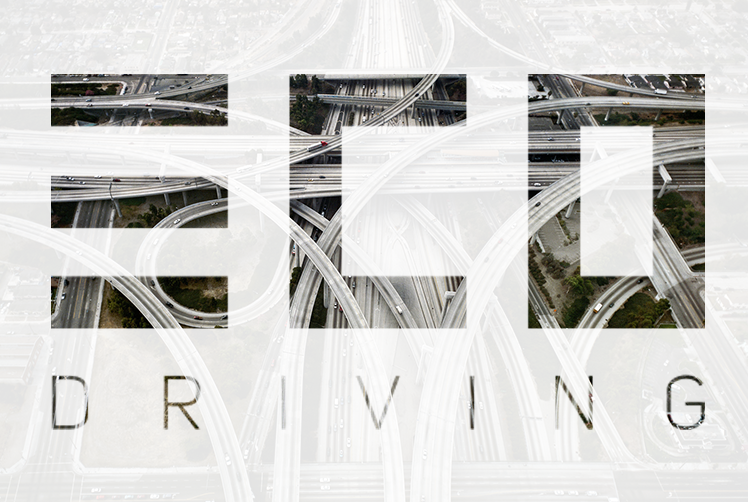
Our company has developed a tool for evaluating driving behavior with the logical name "Eco Driving". With this application, the operator can see an objective assessment of the quality of driving an accountable vehicle, both for a single trip and for a total period of time. Eco Driving also allows you to view general data on the driving style of all fleet units. The application is available to all customers of the company working with the Wialon transport monitoring system .
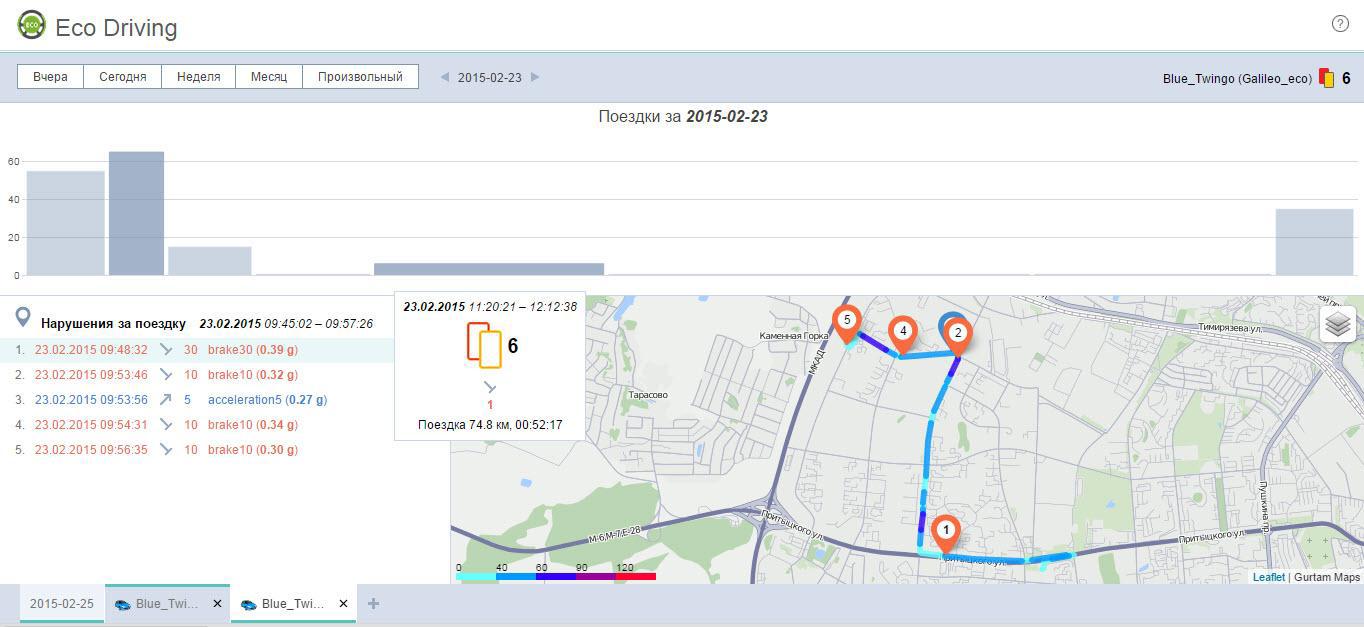
The driving estimation algorithm is based on data from a telematics device. The calculation is based on the indicators of speeding, rapid acceleration, braking and turning, as well as an arbitrary violation: for the analysis, you can use the values of any sensors to add arbitrary disturbance parameters to the driving quality score. For each object, you can customize the system penalties.
Driving behavior rating is the sum of penalty points. The lower the score, the better the driving. Points are put for each trip, and then added up or averaged depending on time or distance. You can independently increase the size of penalty points for a specific type of violation in specific conditions (for example, sudden braking when the axle load sensor is on).
The key to quality driving is a calm and balanced ride. Calm does not mean slow. We are talking about the optimal energy management of the vehicle, as well as the reduction of excessive braking and acceleration.
In the process of creating the Eco Driving application, we asked a completely logical question: what does driving quality affect? And what spoils it (quality)? Interviewing several real customers, we have identified the following points to which you need to strive while driving:
Aggressive driving (in particular, sharp accelerations and braking) negatively affect not only the condition of the car itself, but also everything that is in it. And this: the driver, passengers, cargo, etc.
So, in the case of sharp accelerations, especially angular ones, the force of inertia causes the load to move not synchronously with the car, because of which the load can arrive at the destination point damaged. And if the load is expensive, then its accurate delivery is the main criterion for high-quality driving.
In our application, all sharp, as well as extreme acceleration and deceleration can be displayed in the following form:

Driving safely (in particular, to avoid accidents) is also one of the main criteria for analyzing driving quality, since in the event of an accident, in addition to the driver, his employer is also liable. After all, in case of a serious accident, a car for a long time falls out of the working process, and in this case, the load can most likely be forgotten: it will not be delivered on time, the presentation will be lost, and the product itself will not be suitable for further use.
It is possible to provoke an accident not only by sharp braking, but also by creating a situation where the adhesion of wheels with the road surface is lost. The reason for this may be sharp accelerations and sharp turns. And so, as we visualized this moment in our application:
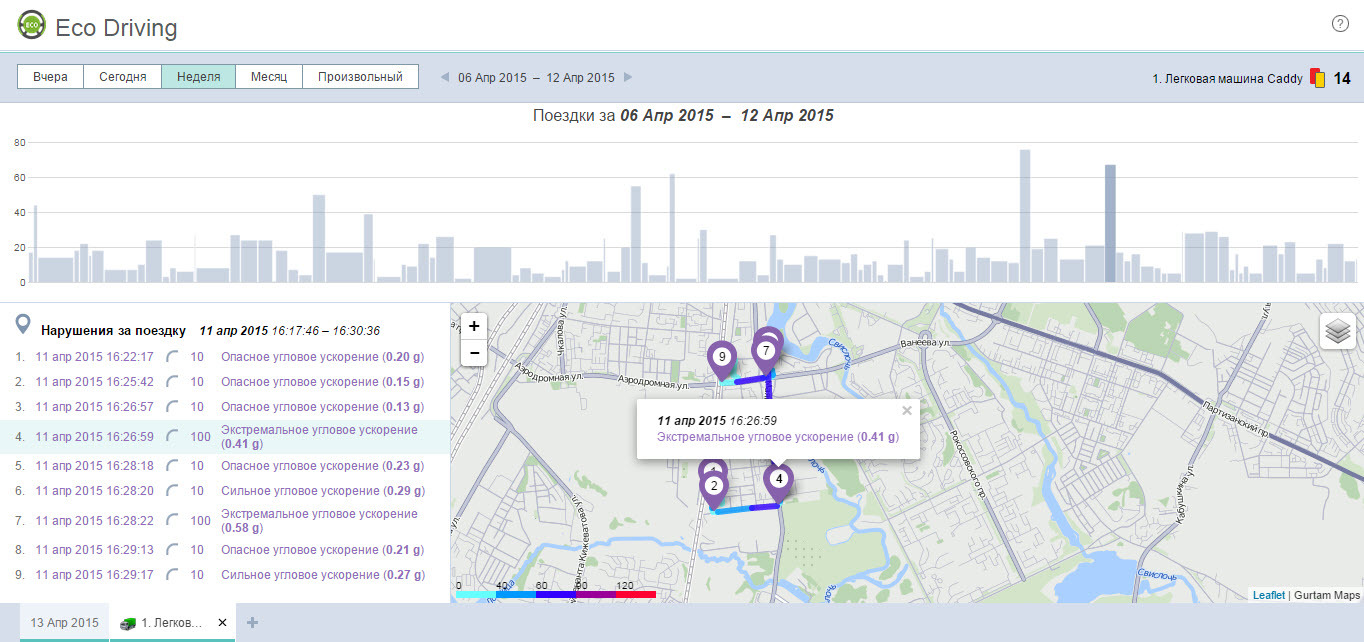
Of course, the value of many indicators may also depend on the season, and on the quality of the road surface, and on the quality of rubber and the degree of pumping of the wheels, so you cannot only blame the driver for driving. The only thing we can do is make a general conclusion: the more often the driver slows down, the worse it is for the safety of the vehicle and the load. And to analyze this, in our application, you can build a report on the number of inhibitions, for example, in 2 weeks:
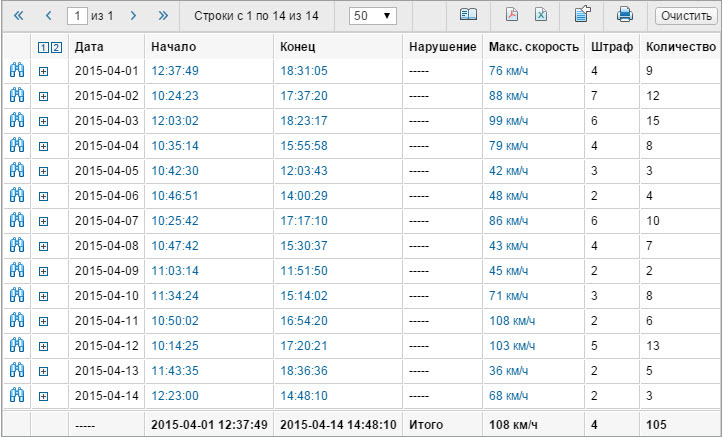
If you correctly set up the GPS tracker in the car, the reports of the Eco Driving application will also help you figure out what happened to the car during an accident or what preceded it.
Even as an indicator to assess the safety of driving, you can use the "smoothness of movement" of the driver, comparing the number of sudden braking and acceleration in the "bad driver" and "ideal" drivers for two weeks.


And if necessary, we can get visual and detailed evidence in the following form:

According to research results, if the average speed is exceeded by 1 km / h, the probability of an accident increases by 10-15%. And if the average flow rate is exceeded by 10 km / h or more, the number of accidents begins to grow sharply on urban roads. For country roads, an increase in the number of accidents is not so critical, but it also takes place.

And the Wialon vehicle monitoring system in conjunction with the Eco Driving application allows you to accurately determine how many times and how much the driver violated speed:

And also to see all violations on the map and statistics of violations on trips of a separate vehicle:

The first step to saving fuel is to take advantage of the inertial movement of the car and reduce the total number of braking, not forgetting, of course, about safety. We have already described above the possibility of displaying and analyzing the amount of braking and acceleration. However, note that the report can be built separately for trips and, accordingly, compare the number of brakings, taking into account the duration of the entire trip and the distance traveled. In Eco Driving, it looks like this:
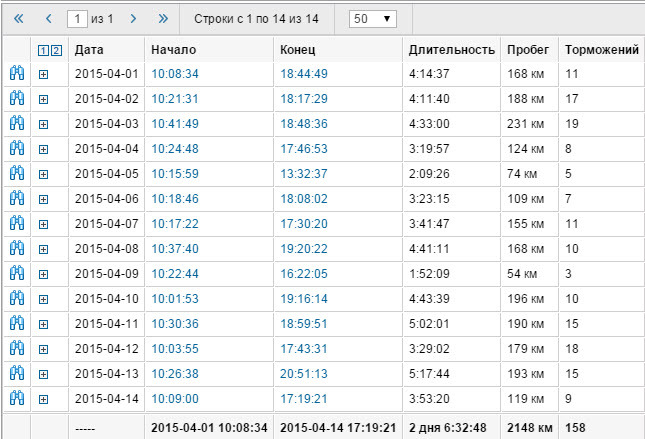
Or like this, in more detail:
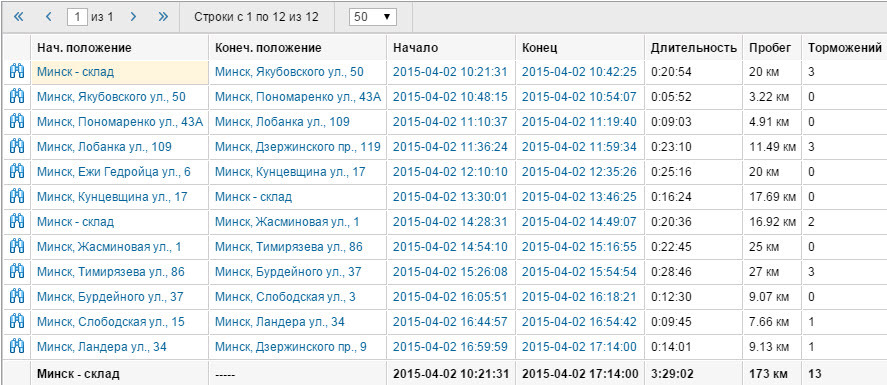
All experienced drivers know: from the point of view of fuel economy, if braking is necessary, it is necessary to brake the engine, because it is more effective than braking when coasting. Also, when coasting, the safety of movement decreases significantly. Check these facts (the braking is carried out by the engine or coasting), using data from GPS-controllers is not yet possible, but it would definitely be interesting and useful (hint to manufacturers).
An important contribution to fuel consumption also contributes to the use of the engine at high speeds. This can be easily seen on the speed characteristics of the engines:

Although the engine power increases with increasing speed, torque decreases and the specific fuel consumption increases. Thus, it is very important to control the use of the correct gear, switch in time and not exceed the optimum engine speed. If the GPS tracker is configured so that it can transmit data, on what transmission the car is traveling, then it will be easy to set up the necessary report. A rule of thumb that is taught in driving schools can be taken as a basis: the transfer number must be equal to the rounded integer part from dividing the current speed by 10 km / h (i.e., at the current speed of 32 km / h - the car should move in 3rd gear) .
However, in most cases, GPS trackers do not provide such information, but, as an alternative method, you can analyze the same acceleration values, while paying attention to the speed. After all, accelerating with the same acceleration from 0 to 30 km / h is far from being the same as from 40 km / h to 70 km / h, even in the same time. Therefore, for example, you can see accelerations greater than 0.3g at different speed ranges.


Speed ranges and acceleration values can be customized to any: for different types of vehicles, load, engine performance, etc.
We think it is obvious that frequent sequences: “gas-brake-gas” significantly increase the wear of clutch systems during heavy acceleration and the braking system during heavy braking. And as shown above, this can also be fixed and analyzed.
A separate item is the excess engine speed, because this is a factor in the wear and tear of a car’s resources, as well as wasteful use of fuel. To check this, you can analyze the data from the engine speed sensor by connecting to the vehicle OBD II or CAN bus, setting the optimal speed limits in the appropriate parameters (sensors), as well as the corresponding penalty points for violations.

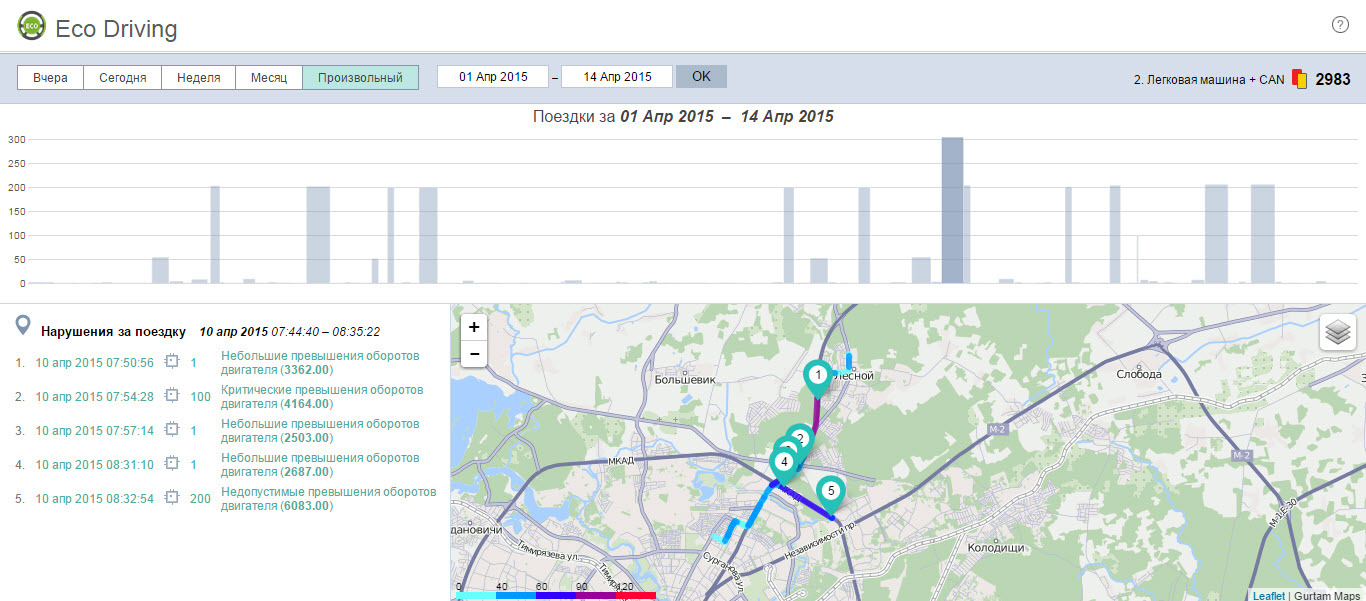
Considering the above-described flexibility of Eco Driving settings (the ability to specify the amount of the fine for any exceeding the threshold of any criterion and choosing the method of averaging the assessment), depending on the organization of workflows and the needs of the end customer, you can customize the system for evaluating driving quality for almost any task. Accordingly, this tool can be used in various fields: from taxi services to the transport of dangerous goods.
If you still have questions on the functionality, technical implementation of the solution, etc., ask in the comments - I will try to answer in detail.
When the car is used for personal purposes and belongs to the driver, the choice is his: you can hurry, drown, go into corners skidding and not be afraid to catch the Matiz riding in front of the hood.
And if you are the owner of a large fleet, do you have dozens of trucks and tons of valuable cargo under your responsibility? This is where Eco Driving comes in handy. You can ask your employees carrying Chinese porcelain, not to brake sharply and carefully take turns. But not the fact that they will listen to you. But it is possible to check who is to blame for the fact that during the delivery the cargo was damaged and the suspension was broken.
')

Our Eco Driving Solution
Our company has developed a tool for evaluating driving behavior with the logical name "Eco Driving". With this application, the operator can see an objective assessment of the quality of driving an accountable vehicle, both for a single trip and for a total period of time. Eco Driving also allows you to view general data on the driving style of all fleet units. The application is available to all customers of the company working with the Wialon transport monitoring system .

The driving estimation algorithm is based on data from a telematics device. The calculation is based on the indicators of speeding, rapid acceleration, braking and turning, as well as an arbitrary violation: for the analysis, you can use the values of any sensors to add arbitrary disturbance parameters to the driving quality score. For each object, you can customize the system penalties.
Driving behavior rating is the sum of penalty points. The lower the score, the better the driving. Points are put for each trip, and then added up or averaged depending on time or distance. You can independently increase the size of penalty points for a specific type of violation in specific conditions (for example, sudden braking when the axle load sensor is on).
What does driving quality affect?
The key to quality driving is a calm and balanced ride. Calm does not mean slow. We are talking about the optimal energy management of the vehicle, as well as the reduction of excessive braking and acceleration.
In the process of creating the Eco Driving application, we asked a completely logical question: what does driving quality affect? And what spoils it (quality)? Interviewing several real customers, we have identified the following points to which you need to strive while driving:
- cargo safety;
- traffic safety;
- fuel economy;
- reduced vehicle wear.
Cargo safety
Aggressive driving (in particular, sharp accelerations and braking) negatively affect not only the condition of the car itself, but also everything that is in it. And this: the driver, passengers, cargo, etc.
So, in the case of sharp accelerations, especially angular ones, the force of inertia causes the load to move not synchronously with the car, because of which the load can arrive at the destination point damaged. And if the load is expensive, then its accurate delivery is the main criterion for high-quality driving.
In our application, all sharp, as well as extreme acceleration and deceleration can be displayed in the following form:

Traffic safety
Driving safely (in particular, to avoid accidents) is also one of the main criteria for analyzing driving quality, since in the event of an accident, in addition to the driver, his employer is also liable. After all, in case of a serious accident, a car for a long time falls out of the working process, and in this case, the load can most likely be forgotten: it will not be delivered on time, the presentation will be lost, and the product itself will not be suitable for further use.
It is possible to provoke an accident not only by sharp braking, but also by creating a situation where the adhesion of wheels with the road surface is lost. The reason for this may be sharp accelerations and sharp turns. And so, as we visualized this moment in our application:

Of course, the value of many indicators may also depend on the season, and on the quality of the road surface, and on the quality of rubber and the degree of pumping of the wheels, so you cannot only blame the driver for driving. The only thing we can do is make a general conclusion: the more often the driver slows down, the worse it is for the safety of the vehicle and the load. And to analyze this, in our application, you can build a report on the number of inhibitions, for example, in 2 weeks:

If you correctly set up the GPS tracker in the car, the reports of the Eco Driving application will also help you figure out what happened to the car during an accident or what preceded it.
Even as an indicator to assess the safety of driving, you can use the "smoothness of movement" of the driver, comparing the number of sudden braking and acceleration in the "bad driver" and "ideal" drivers for two weeks.


And if necessary, we can get visual and detailed evidence in the following form:

According to research results, if the average speed is exceeded by 1 km / h, the probability of an accident increases by 10-15%. And if the average flow rate is exceeded by 10 km / h or more, the number of accidents begins to grow sharply on urban roads. For country roads, an increase in the number of accidents is not so critical, but it also takes place.

And the Wialon vehicle monitoring system in conjunction with the Eco Driving application allows you to accurately determine how many times and how much the driver violated speed:

And also to see all violations on the map and statistics of violations on trips of a separate vehicle:

Fuel economy
The first step to saving fuel is to take advantage of the inertial movement of the car and reduce the total number of braking, not forgetting, of course, about safety. We have already described above the possibility of displaying and analyzing the amount of braking and acceleration. However, note that the report can be built separately for trips and, accordingly, compare the number of brakings, taking into account the duration of the entire trip and the distance traveled. In Eco Driving, it looks like this:

Or like this, in more detail:

All experienced drivers know: from the point of view of fuel economy, if braking is necessary, it is necessary to brake the engine, because it is more effective than braking when coasting. Also, when coasting, the safety of movement decreases significantly. Check these facts (the braking is carried out by the engine or coasting), using data from GPS-controllers is not yet possible, but it would definitely be interesting and useful (hint to manufacturers).
An important contribution to fuel consumption also contributes to the use of the engine at high speeds. This can be easily seen on the speed characteristics of the engines:

Although the engine power increases with increasing speed, torque decreases and the specific fuel consumption increases. Thus, it is very important to control the use of the correct gear, switch in time and not exceed the optimum engine speed. If the GPS tracker is configured so that it can transmit data, on what transmission the car is traveling, then it will be easy to set up the necessary report. A rule of thumb that is taught in driving schools can be taken as a basis: the transfer number must be equal to the rounded integer part from dividing the current speed by 10 km / h (i.e., at the current speed of 32 km / h - the car should move in 3rd gear) .
However, in most cases, GPS trackers do not provide such information, but, as an alternative method, you can analyze the same acceleration values, while paying attention to the speed. After all, accelerating with the same acceleration from 0 to 30 km / h is far from being the same as from 40 km / h to 70 km / h, even in the same time. Therefore, for example, you can see accelerations greater than 0.3g at different speed ranges.


Speed ranges and acceleration values can be customized to any: for different types of vehicles, load, engine performance, etc.
Reduced vehicle wear
We think it is obvious that frequent sequences: “gas-brake-gas” significantly increase the wear of clutch systems during heavy acceleration and the braking system during heavy braking. And as shown above, this can also be fixed and analyzed.
A separate item is the excess engine speed, because this is a factor in the wear and tear of a car’s resources, as well as wasteful use of fuel. To check this, you can analyze the data from the engine speed sensor by connecting to the vehicle OBD II or CAN bus, setting the optimal speed limits in the appropriate parameters (sensors), as well as the corresponding penalty points for violations.


Considering the above-described flexibility of Eco Driving settings (the ability to specify the amount of the fine for any exceeding the threshold of any criterion and choosing the method of averaging the assessment), depending on the organization of workflows and the needs of the end customer, you can customize the system for evaluating driving quality for almost any task. Accordingly, this tool can be used in various fields: from taxi services to the transport of dangerous goods.
If you still have questions on the functionality, technical implementation of the solution, etc., ask in the comments - I will try to answer in detail.
Source: https://habr.com/ru/post/255921/
All Articles